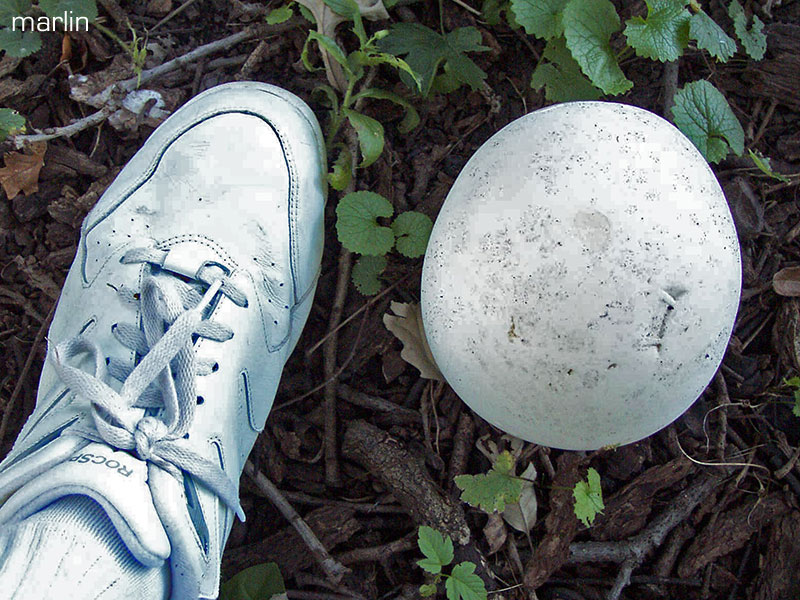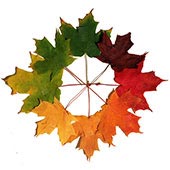Giant Puffball Fungi – Calvatia gigantea

Kingdom: Fungi (mushrooms, lichen, etc.) / Phylum: Basidiomycota (club fungi: mushrooms, shelf fungi, puff balls) Family: Lycoperdaceae (Puff balls)
Puffballs are spherical fruiting bodies that contain spores. They sit directly on the ground or on rotten wood. Ranging from golf ball size to as large as a watermelon, a really big specimen can contain trillions of spores.
The giant puffball cracks open to allow the wind to carry away its spores. Other puffballs have a small opening at the top. The wind may suck spores out of these openings like smoke drawn from a chimney. The spores can also be puffed out of the opening when the fruiting body is hit by raindrops Each spore is 3.5 to 5.5 microns in diameter. They are bone dry, making a mature giant puffball a sack of fine powder. The Lakota tribe of Native Americans used this essentially sterile, dry material in their medicine kit, packing wounds with puffball spores to slow bleeding and help the blood clot.
Although Fungi were once considered to be part of the plant kingdom, most experts now consider them to be a separate Kingdom or phylum. There are estimated to be over 100,000 different fungi, most of which form only tiny threads (Hypha) that can only be seen through a microscope. Of these, about 20,000 are considered to be high fungi or macro fungi, i.e. those that produce visible fruiting bodies. Only these are of any interest to the fungi enthusiast and covered in any detail, mostly of which belong to the subdivision Ascomycotina and Basidiomycotina.
Species of fungi are divided into the following three categories
1 – Mycorrhizal fungi form a partnership with some plants,but mostly with living trees.
2 – Parasitic fungi prefer the living host; this category is fairly small.
3 – Saprophytic fungi prefer dead and decaying material.
Mycorrhizal
Mycorrhizal fungi form a partnership mainly with trees but also with some plants, but rather then harming the tree, their presence significantly increases the roots’ effectiveness. Fungi send their hyphae in and about the little rootlets of the tree until its difficult to tell them apart. The tree supplies the mycelium with moisture and carbohydrates, and the mycelium returns the favour with minerals and other nutrients from the surrounding soil. Mycorrhiza fungi are beneficial both in nature and agriculture; plants with them tend to grow better than those without.
Parasitic
Parasitic fungi are the second largest group, of whose members do a lot of serious damage. Rather than obtaining their food from dead animals or plants, they prefer a living host, often attacking and killing, it then living on as a saprophytic fungi.
Saprophytic
Saprophytic fungi are the largest group of fungi, they growing on dead organic matter such as fallen trees, cow patties, dead leaves, and even dead insects and animals. These fungi have enzymes that work to “rot” or “digest” the cellulose and lignin found in the organic matter, with the lignin being an important source of carbon for many organisms. Without their digestive activities, organic material would continue to accumulate until the forest became a huge rubbish dump of dead leaves and trees.
North American Insects & Spiders / Tree Encyclopedia Explore over 7,000 close-up photos and information on over 700 species commonly found in North America. Live insects & spiders photographed in the wild. Our tree encyclopedia is world-renowned, with diagnostic photos and information for nearly 500 different species of trees.
